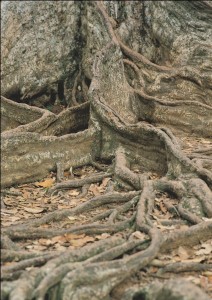Hi Everyone,
This week’s article focuses on generating a sense of wonder, which is a desirable internal condition for enjoying and appreciating the Christmas season!
Last week’s meditation class on “Going from no self to the expanded self” is now available as a recording, if anyone is interested in obtaining a copy you can go HERE.
Finally, you can see the schedule of classes for January below.
Wishing you all the very best for Christmas and the Winter Solstice!
Toby
Upcoming classes in January 2012:
Wednesday Jan 4th&11th: Wednesday Morning Qi Gong Meditation Classes
Sunday 8th Jan 8-9am: Sunday Morning Qi Gong Walking Meditation Classes at the Botanic Gardens
Wednesday Jan 11th 7.30-8.30pm: Meditation Class on How to Meditate on the Inner Weather of the Mind
Wednesday Jan 18th 7.30-9.30pm: An Introduction to Meditation from the Perspective of Zen
Article of the Week:
Reconnecting to a Sense of Wonder (Our Goldilocks Planet)
One of the things that I appreciate about Christmas looking back on my childhood was the sense of wonder that seemed to pervade the atmosphere during that time. Of course as we grow older the bubble bursts and the sense of wonder diminishes as we discover where the presents really come from, and who really drunk the brandy and ate the Christmas cake that was left out for Santa!
One of the main things that we seek to reclaim on our spiritual path (in whatever terms we may define it) is a sense of wonder. It is a bit like the wonder that we had as children at Christmas, but it is a post-rational wonder, a sense of wonder in being alive, in having the opportunity to live a human life even though we know Santa does not really visit over Christmas, or that the world is filled with contradictions and pain, and with full knowledge and awareness of what science and rationality tells us about the way things are.
The fact remains that, despite all we know, life is a mystery, life is uncertain, sometimes beautiful, sometimes terrifying. One of the things I have been doing as Christmas approaches is to consciously cultivate a sense of wonder at this mystery, and try to allow that sense of wonder to pervade my everyday life as deeply as possible.
If you wish to do this yourself, one thing you can do is take ten minutes to simply recall and write down the things that cause a sense of the wonder of life to arise within you. Sometimes it is not so much that we CAN’T develop wonder and appreciation, it is just that we FORGET to! Once you have your list, then just take a few minutes each day to review your list and reconnect to the sense of wonder and appreciation that this list awakens within you.
Our Goldilocks Planet
If you want something specific to help you develop a sense of wonder, here is one that I have been thinking about a lot. I learned a couple of weeks ago from one of my daughters school books that we live on a “Goldilocks Planet” which is to say that the conditions on our planet are extremely rare in this universe, and it is these conditions that give rise to the opportunity for biological life. I have been using this as a way of contemplating wonder, and just feeling thankful to have the opportunity to be alive on this fragile rock hurtling through the Universe! Here are the basic characteristics of a Goldilocks planet, if one of these were missing, none of us could exist!
1) Having just the right sized sun
If our sun was too big it would burn out too fast for life to evolve on a planet, if it was too small it be prone to give rise to surface storms that would destroy life on planets. We have a nice middle sized sun with a leisurely 10 billion year lifespan!
2) Just the right sized planet
If earth was too big (like say Jupiter) the gravity of the planet would crush all life. If it was too small (like Mars) our bodies would explode and dissipate due to lack of gravity. The Earth is just the right size, with enough gravity to hold an atmosphere that sustains life and protects us from the sun’s rays.
3) Just the right distance from the sun
Earth inhabits the narrow band of orbit around the sun that means our water is liquid, not frozen or gaseous. Venus, one planet nearer the sun has an average surface temperature of +500 degrees Celsius, whilst Mars, one planet further away has an average temperature of -63degrees Celsius.
4) The existence of water
…and a solid surface upon which it can pool. Life as we know it depends upon water
5) A little help from Jupiter
Whose gravitational field attracts, blocks and absorbs many dangerous asteroids (due to its size and enhanced gravitational field). So we are in much less danger of mass destruction than we would otherwise be!
So, for me, contemplating our fragile life living on a Goldilocks planet has really helped fill my Christmas season with wonder and awe, I hope it helps you too!
© Toby Ouvry 2011, you are welcome to use or share this article, but please cite Toby as the source and include reference to his website www.tobyouvry.com








